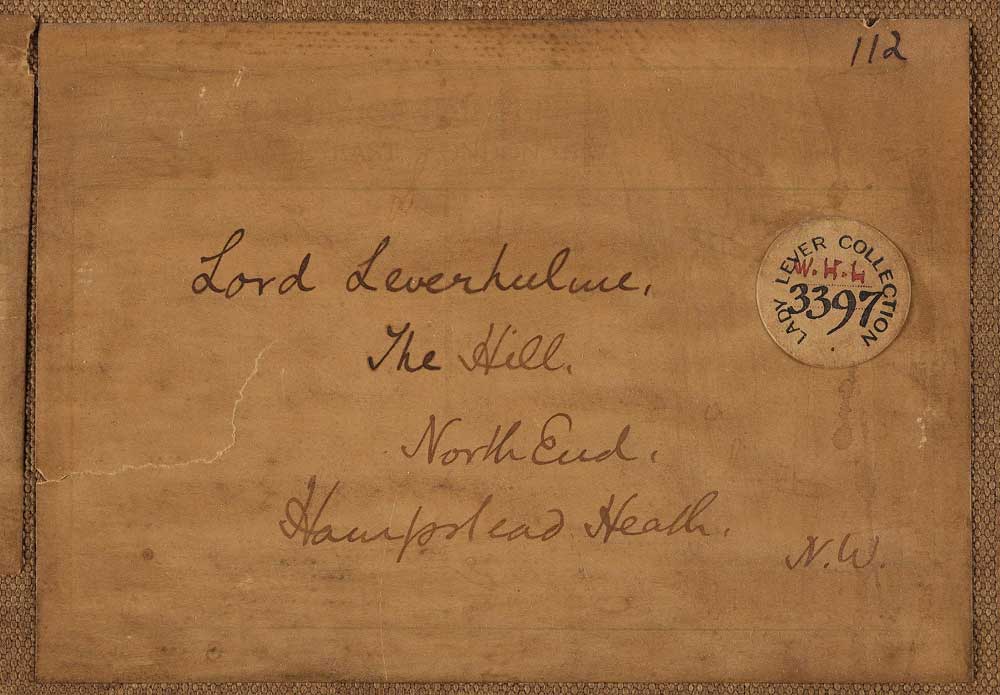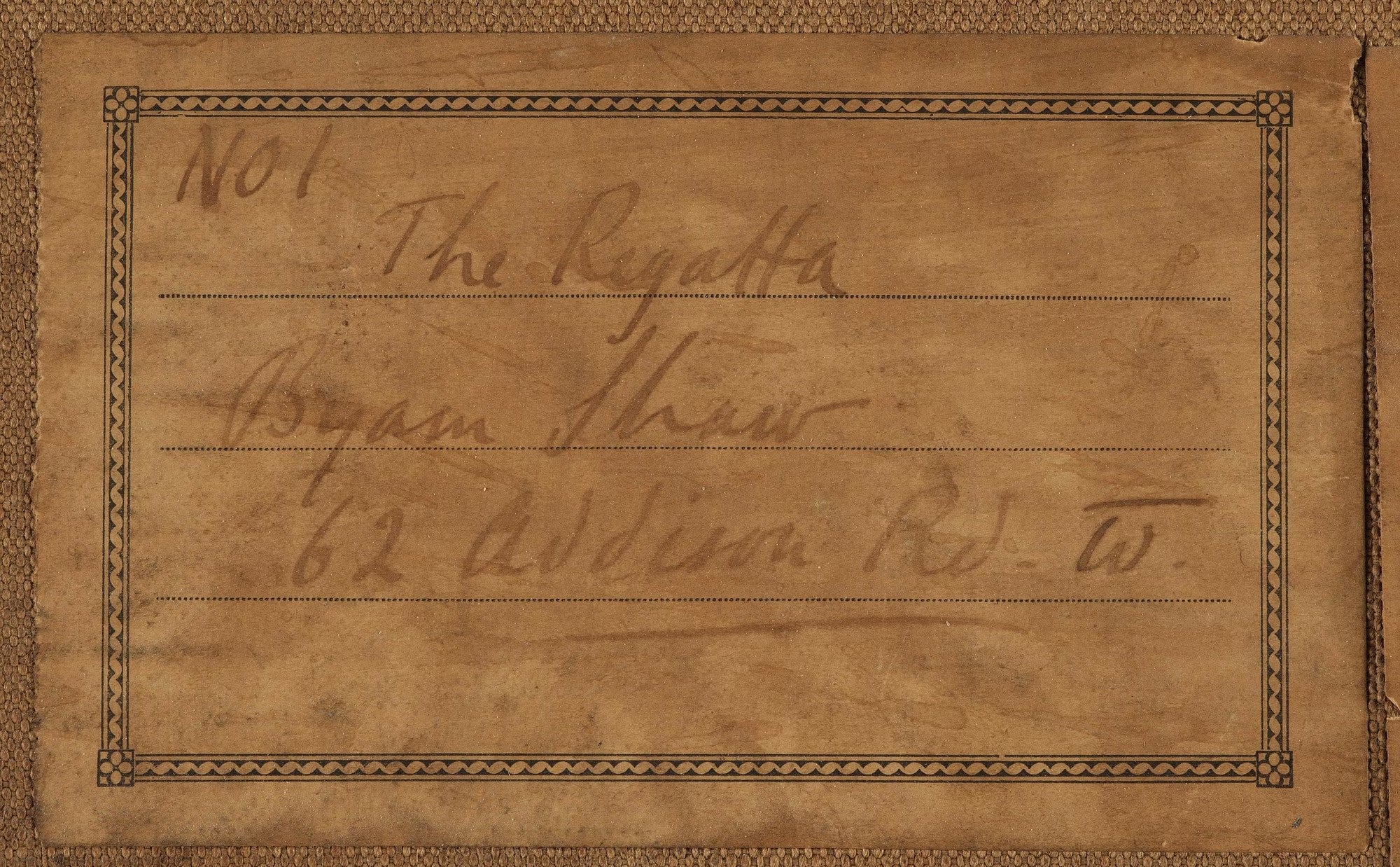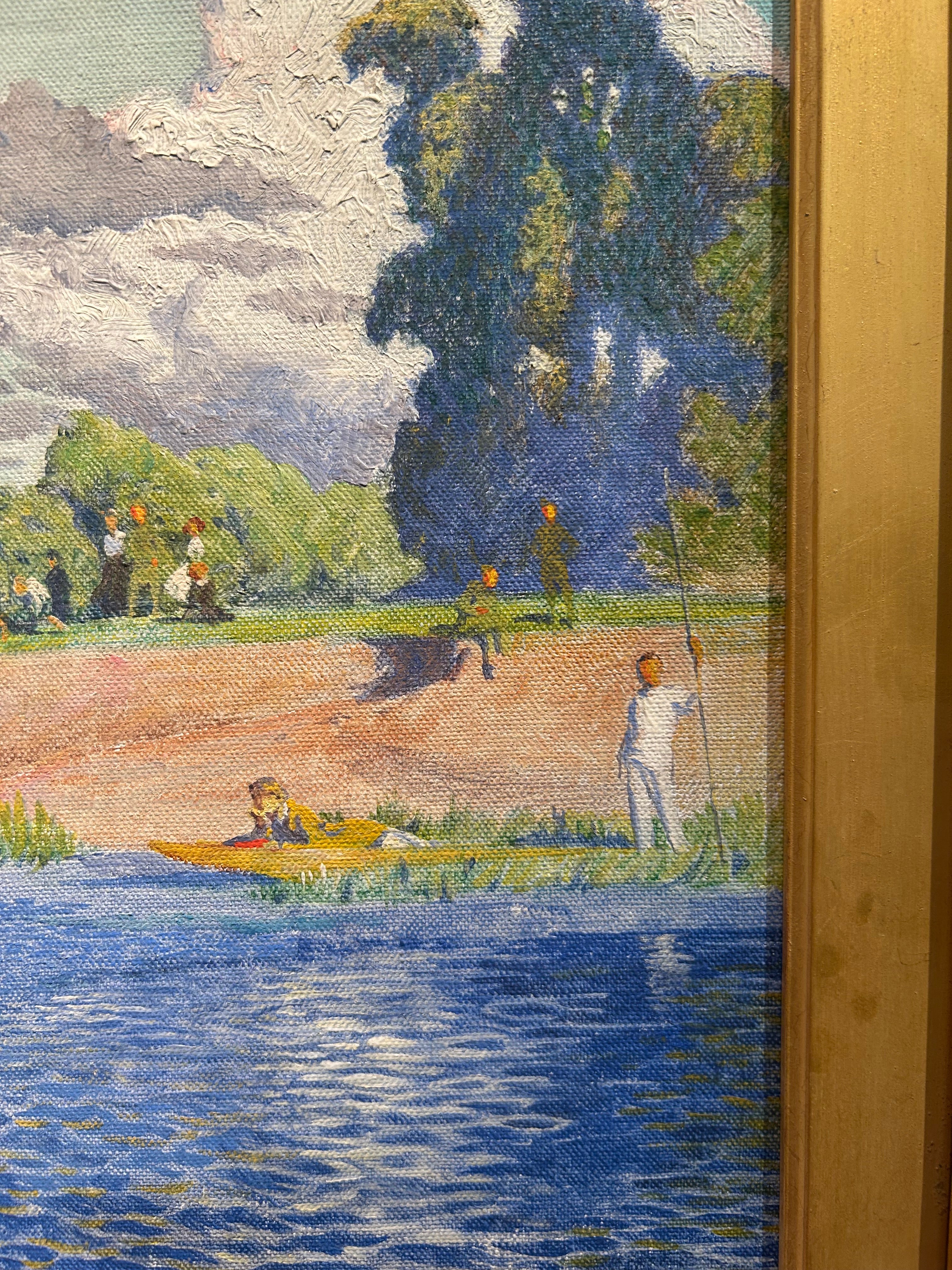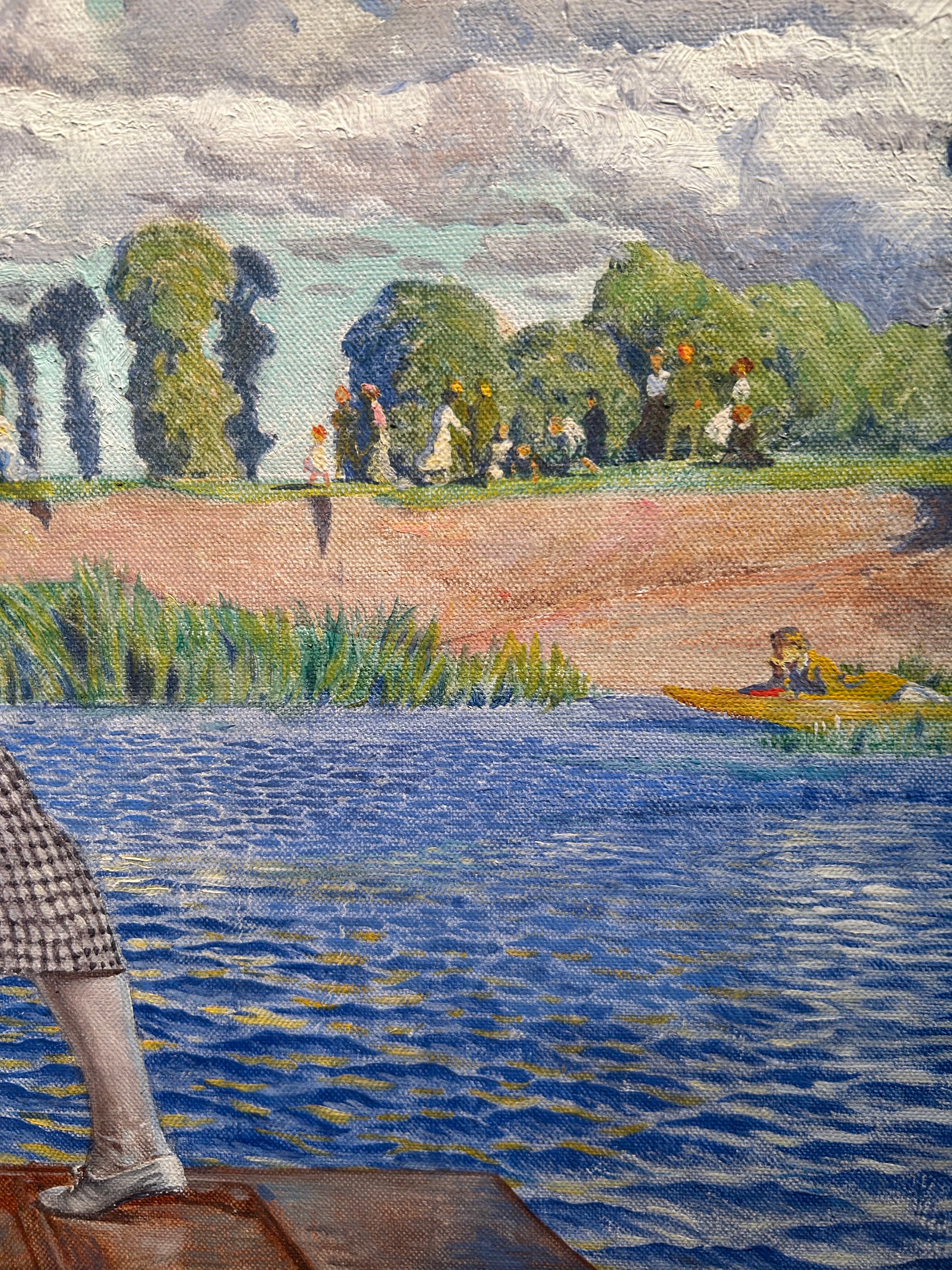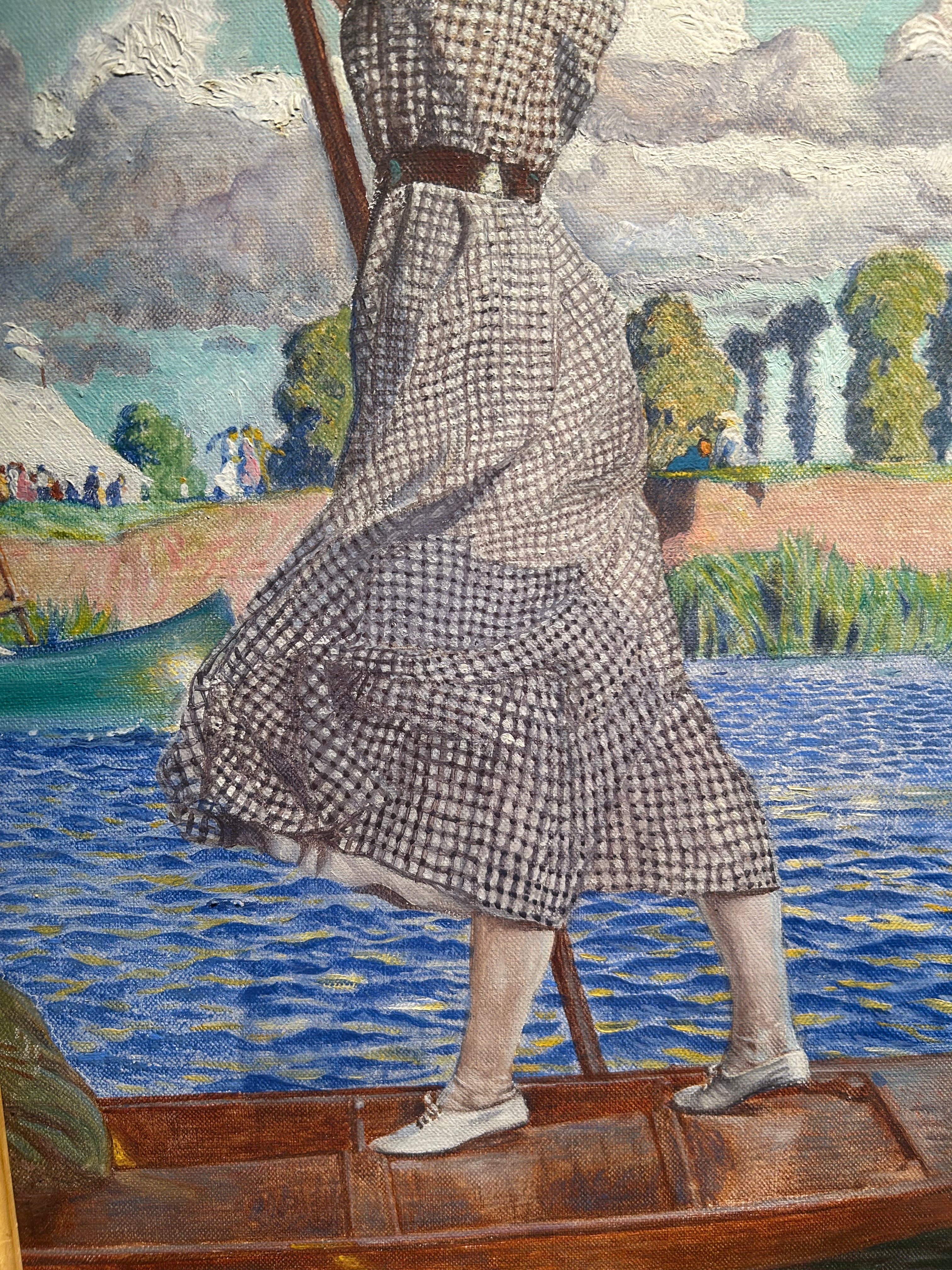

John Byam Liston Shaw
The Regatta
Oil on canvas, signed lower right
Image size: 24 x 19 ¾ inches (61 x 50 cm)
Original frame
Provenance
Bought from the artist by W. H. Lever, 1st Viscount Leverhulme, 17 December 1917
The Lady Lever Art Gallery, Port Sunlight; Christie's, 6 June 1958, lot 157 (7gns. to Omell)
Christies, London, 25th October 1991
Sothebys, London, 3rd November, 1993
Private Collection, England
Bukowski Auctioneer, International sale, 5 - 7 December 2000, lot 304.
Private Collection
Literature
1. R.R. Tatlock, English Painting of the XVIIIth-XXth Centuries - A Record of the Collection in the Lady Lever Art Gallery, Port Sunlight, B.T. Batsford Ltd., London 1928, p.112, no.3397
2. Rex Vicat Cole, The Art & Life of Byam Shaw, Seeley, Service & Co. Ltd., London 1932, p.183
The painting depicts the hot summer of 1914, just before the Great War.
Soldiers can be seen on the banks in uniform and in the foreground punt a soldiers arm with the stripes of his rank as a sergeant is showing.
The model for The Regatta, which Tatlock aptly described as 'a brightly-coloured picture of a girl punting', was Maud Tindal Atkinson, a close friend of the Byam Shaw family. Her father was a judge and her brother became Sir Edward Tindal Atkinson, Director of Public Prosecutions. Maud, who was one of four sisters, was a pupil of Byam Shaw's and modelled for many of his pictures. Her sister Ethel was Secretary of the Byam Shaw and Vicat Cole School of Art, founded in Campden Street, Kensington, in 1910.
The painting depicts the artist Maud Tindal Atkinson punting across a gently rippling lake, as onlookers watch on from the sandy banks. Her figure is twisted in movement, foot slightly raised and arms straining with effort - it seems as if she is about to raise the paddle to row the boat a little further. A fresh breeze tousles her curly hair and checked skirt, and plays with the surface of the water to create small peaks and ripples. There is a true sense of movement that Byam Shaw has magnificently represented within this painting, only emphasised by the off-centre composition of the image giving the impression that the boat is moving out of the bounds of the canvas.
The work is incredibly pretty, reflecting Byam Shaw’s association with the aesthetic movement in art. The vivid colours pay homage to the extravagant palettes of the pre-Raphaelites, who were in turn adopting techniques from Renaissance Old Masters. The bright palette of the image serves to create a sense of nostalgia, and its focus on blue and green hues ensures that Maud stands out with her black and white checked dress. The background landscape is also truly striking, with the water receding masterfully into the background and becoming a sandy shore, behind which a copse of plentiful trees can be seen. In the sky, beautifully fluffy clouds hover over the scene below - a few storm clouds threaten a possible change in the weather. Nonetheless, Maud rows on, undeterred by poor weather - instead, she focuses on the beauty of the moment she finds herself in at present.
The picture was in the Lady Lever Art Gallery, Port Sunlight until 1958, when the Gallery sold many works in the collection which were currently out of fashion. Vicat Cole (op. cit., p. 197) refers to a 'drawing' entitled The Regatta which was shown at the Royal Society of Painters in Water-Colours in 1917; this was presumably a version of our picture, although it was not in the Society's Summer Exhibition.
John Byam Liston Shaw
John Byam Liston Shaw was born in Madras, India in 1872 to a high court official. He travelled to England in 1878 and was advised by Millais to study at the St Johns Wood School of Art after his father died in 1887. At this art school, Byam Shaw met fellow artists Rex Vicat Cole, Gerald Metcalfe, and Evelyn Pyke-Nott, with the latter eventually becoming his wife.
In 1890, Byam Shaw was admitted to the Royal Academy Schools and won the Armitage Prize in 1892, the watercolour competition in 1893, and two awards for sketching in 1893. From 1893, Shaw shared a studio with Metcalfe and began to exhibit at the Royal Academy, and was strongly influenced by the themes and aesthetics of the Old Masters and the Pre-Raphaelite movement. He became well known for his paintings that focused on literary, mythological, and allegorical subjects taken from contemporary and medieval literature, and began to be commissioned to illustrate novels and poetry collections.
Byam Shaw took on his own studio in 1897 and began to exhibit at solo shows with his dealer, Dowdeswell and Dowdeswell. Between 1899 and 1908, he held five exhibitions with them. He was elected to the Royal Institute of Painters in Water Colours and Royal Institute of Painters in Oils in the late 1890s. Byam Shaw did not limit himself to painting, and was an accomplished master of stained glass, theatre set design, and tapestry.
In 1908, Byam Shaw and Vicat Cole began to teach art at King’s College London, leaving in 1910 to start their own art school in Kensington - the Byam Shaw and Vicat Cole School of Art. The school is still operational today, but has merged with St Martin’s School of Art and is now known as the Byam Shaw School of Art.
When the First World War broke out in 1914, Byam Shaw joined the United Arts Rifles with Vicat Cole, but transferred to the Special Constabulary. He drew a number of cartoons and propaganda illustrations, which were published by the press, and also found work with memorial commissions - most notably for the Canadian war memorial.
Shortly after the war, Byam Shaw became unwell and passed away in the post-war influenza epidemic in 1919. His funeral was held at St Barnabas’ church, for whom he had designed two stained glass windows. Byam Shaw’s work is held in prominent public collections, such as the Leeds Art Gallery, the Russell-Cotes Art Gallery, Leighton House Museum, and the University of Birmingham.


